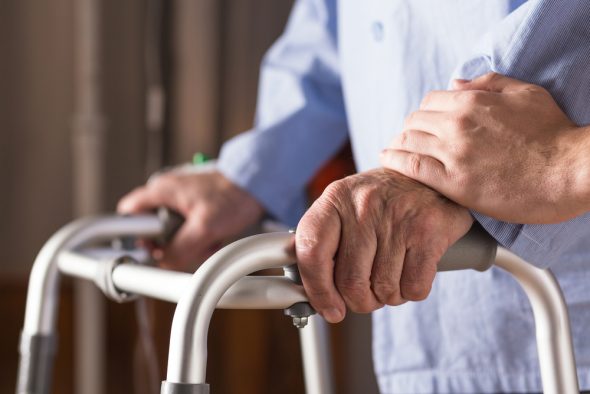If you’re one of the growing numbers of people who are resistant to sending your elderly members of the family to a care home, yet you’re worried about how they’ll cope on their own, perhaps in the same house that you grew up in, you needn’t despair. Plenty of older adults feel most comfortable at assisted living or senior living communities like this Senior living in Walnut Creek, CA, enjoying the presence of friends and clubs nearby, but if they wouldn’t like to leave the house you could always recommend in home care plans. It’s also worth noting that these kind of facilities work with Remote Medical Coding Companies that offer professional Online Medical Coding Courses in order to identify if there is anything they should change in order to adapt. This ensures needs are properly met, and avoids issues from getting out of hand before they are noticed and properly handled. As you age you need your care to go a step beyond and truly look out for your health, so moving to a facility that can provide this for you makes perfect sense.
Let’s look at other alternatives as well. Often the best option is to reorganize their house, tailoring it to their specific needs, like getting new hearing aids for their deafness or lift chairs for if they have mobility problems, and ensuring that they have access to companion care if they should they need it. Here are some smart ways to think about adapting the homes of the elderly to keep them comfortable in their twilight years. If you find that it would be easier to have your elderly relatives live in a professional Assisted Living or a senior living facility such as a memory care community, then make sure you visit this site.


Fit Unobtrusive Alarms
This is probably your first easy-to-achieve port of call when deciding to keep your elderly relatives in the home they love. It gives you peace of mind and them an option for calling for help if anything is to go wrong. It is the pre-care stage of ensuring the elderly are well-adapted to the challenges of old age and is often rarely used: it’s the initial precaution to please all parties.
There are room-by-room hanging alarms which you can link to emergency services in case of a break-in, or care professionals in case of sudden need. Then there are wearable alarm systems that will notify the important people if there’s a problem; these often include a receiver so that in the event of a fall or sudden pain, you’ll be up to date in real time. Read some reviews to get acquainted with what’s out there and to understand which alarm is most likely to suit the needs of the people you’re buying it for.
Begin Making New Interior Plans
Even if your elderly relatives are resistant to changing anything about their home, if you believe they are going to run into problems in its current state, you should certainly insist on some appropriate measures. The best way to get a grasp of future challenges is to discuss with the homeowners what they are finding difficult, and when they anticipate they will struggle with in the future. Second, living with them in-house for a week will give you a good idea of what it is that’s going to cause problems down the line. Beyond these measures, reading some tips online might give you some novel and useful ideas.
Happily, there are cutting-edge and wide-ranging facilities and products on the market to cater to all sorts of different needs, such as wheelchair ramps, a walk-in shower, or a far easier-to-use kitchen. You may consider adding stair lifts, a mechanical device for lifting people, typically those with disabilities, up and down stairs. Research some of these products to get an idea of the sort of things out there that will lend a much-needed helping hand, and contact builders or handymen to see what sort of job this will entail. While the disruption will be temporarily difficult to elders, the sooner it’s done, the better regarding catering towards the risk of any further deterioration.
Organizing Care
Again an important part of adjusting the home of old people, the option of having a non-medical home care for your elderly relatives. Whether they live in the house or in an assisted living community through a Medicaid Eligible Assisted Living program, it is something well worth considering, even if it doesn’t seem pressing at present. Receiving respite care, especially in one’s own home, can feel uncomfortable to older adults and so this is a matter to confront with care and sensitivity, gently laying out your arguments for this service. If not, you can check out https://www.residencesatplainview.com/apartments/independent-living/ for independent living.
There are a variety of different care options to consider if you decide to go down this route. However, one of the best for those who are remaining in their own home is applying for CDPAP, which operates with older adults’ concerns at its core. Live in care is a great way to have help organize the schedule of the elderly . It enables friends and family to become paid caregivers in a way that prevents the awkward feeling of having a stranger in their house, one that, perhaps, they might not take a shine to.
Considering Overall Wellbeing
If you’ve planned with the previous steps in mind, then you have done everything you can for the safety and security of those greying loved ones who are so keen to protect. Above and beyond catering towards these basic human needs, though, is to consider exactly how you can maintain or enhance the lifestyles of the older adults you are helping. It could be everything from helping them with nutrition to encouraging regular exercise (within their capabilities), from buying them a new TV to gifting them a tablet from which to contact loved ones and read the news. For hard of hearing relatives, you may also look into buying them new hearing aids so they can fully enjoy and relax at home while watching TV or listening to their favorite music.
You might feel your job is complete when home care and home adaptions have been organized to make life less difficult for the aged, but this entirely discounts happiness from the equation, and this is something that should be up at the top of your priorities after guaranteeing their safety. Invest time in hearing about their day-to-day before coming up with creative and well-meant methods to bring more joy into their lives.
Do Maintenance
Especially pragmatic if there is already disruption in the house in the form of newly-installed elderly items such as stair lifts, the time you devote to changing your elderly relatives’ house should not discount the benefits of giving the property a quick maintenance once-over. For a variety of reasons, the elderly can begin to take less care in their lives and the first to go is maintenance jobs that they might not even notice need doing. Seizing the initiative here will prevent future mishaps.
Think about the plumbing and heating, the electricity board, loose floor tiles and unhygienic spaces – anything that could become harmful if left in a state towards the disrepair end of the spectrum. This tinkering might take a few hours or a full week, but it will be deeply appreciated and will provide further peace of mind.
It’s a stage in life that can be difficult or emboldening, and if you’ve chosen to ensure your older relatives can remain in their house for years to come, you’re likely to be making this transition as painless and stress-free as possible. Consider these five tips when taking this care route so that your plan is future-proof and helpful in the most loving of ways.

